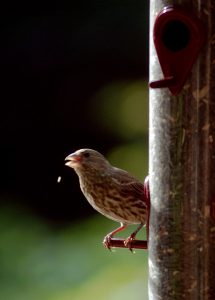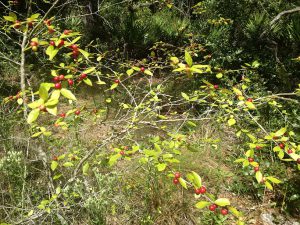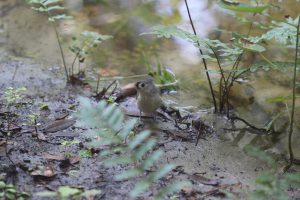The awesome thing about birdwatching is you can do it anywhere, anytime. You can’t say that about many hobbies. With many of us spending more time at home right now, it’s a perfect time to find the birder in you!
Where to start?
A good place to start is think about ways you can attract birds to your yard. This can be a fun family activity too. We often think to go right to bird feeders, but there are a few factors to consider first:

- The more variety of bird feeders and bird seed you provide, the more diversity of birds you may attract.
- Bird feeders need to be cleaned at least twice a month and hummingbird feeders need to be cleaned weekly during the warmer months of the year.
- If you can, feeders should be placed at least 15 feet from other vegetation to limit easy access by squirrels and provide shelter if songbirds need to escape predators.
You can get much more detailed information on types of feeders, food, placement of feeders, cleaning and more here.
If this sounds like too much, fear not, there’s another option.

Native plants are an excellent alternative to bird feeders. They provide natural habitat and food sources birds have utilized for a really long time. Once planted and established, native plants require less maintenance than bird feeders. You can always do a combination of native plants and bird feeders too!
Here’s a great resource for selecting plants. As we always say in Extension, it’s important to put the right plant in the right place. The Florida-friendly Plant Database can help you find plants that are best for your location and conditions.
Don’t feel like planting anything either? Fear not! The trees and shrubs already in your backyard will certainly host at least a few species of birds. Birdwatching just requires you to look and be curious about what you see.
Identifying Birds
There are thousands of species of birds in the world, so it’s easy to get overwhelmed. I would encourage you to start with a small goal. Try to identify one or two of the most common birds you see. Once you learn to identify some of the common bird visitors to your yard, you can slowly begin to expand your identification skills. Here is a blog I wrote on common birds you might see in your yard, and this is another interactive tool to help identify birds based on color, location and time of year. There are some great smartphone apps too like Merlin Bird ID by Cornell Lab. You can always take a picture and send it to me for identification: lara317@ufl.edu.

If you’re more of a virtual learner, check out these recorded webinars (online classes):
Note: These are part of our Wildlife Wednesday Webinar Series. You can find more recorded webinars on our YouTube playlist.
Happy Birding!
 0
0
